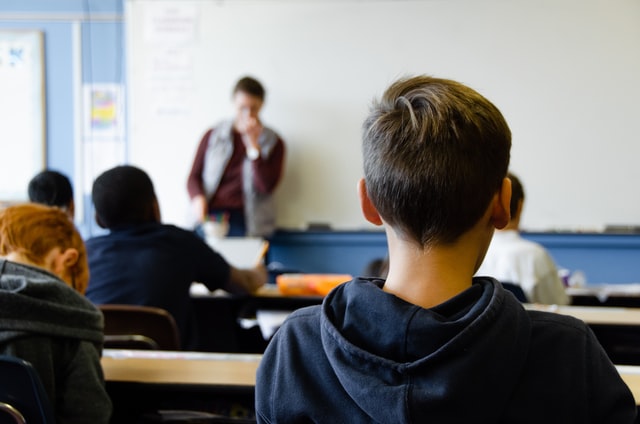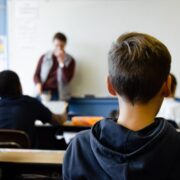Education experts and leaders discuss the drawbacks of the U.S. response to COVID-19 and how best to provide for underserved students
Public education advocates for years have been promoting the reality that the future of the United States hinges on today’s kids receiving quality and affordable education.

But when the COVID-19 pandemic is here to stay with no signs of subsiding in the foreseeable future, the state of public education is in emergency levels of paltry funding, resources and aid for disadvantaged and lower-income students.
The Los Angeles Unified School District (LAUSD) and San Diego Unified District (SDUD) — the two largest school districts in California — both announced last month that it would start out the 2020-2021 school year online to safeguard students, teachers and school staff from the escalating COVID-19 situation in California, as previously reported in the Asian Journal.
In the 17th installment of its “Tracking the Pandemic” press briefing series, Ethnic Media Services on Friday, July 31 held a briefing on the ways in which the U.S.’s responses to the COVID-19 pandemic have both highlighted and amplified disparities within K-12 public education.
Since March, most schools across the United States have utilized the distance learning model in which classes are held 100% online. Class times would be held over various forms of video chat like Zoom, which meant that teachers had to find creative ways to best replicate the classroom experience remotely.
But what this model doesn’t take into account are the existing imbalances in education that put already vulnerable students at a major disadvantage: lack of technology accessibility, the reliance on school counseling and child care and the fact that for many students school is a necessary respite from an uncared-for homelife.
“The pandemic has exposed the great inequities in our society,” Pedro Noguera, the dean of USC’s Rossier School of Education said on Friday’s briefing. “Millions of kids in the United States and in many other countries cannot participate in any learning at all because they don’t have access to the internet in their homes or because they don’t have computers to use for [distance] learning.”
According to the National Center for Education Statistics, in 2020 there are at least 11 million youth who don’t have access to computers or the internet. (This doesn’t include multi-children households where one device is shared among children.)
In July, the Trump administration began pressuring school districts to reopen in the fall, citing the benefits that children receive from a classroom education over the distance learning model.
But neither Education Secretary Betsy DeVos nor President Donald Trump offered specific guidelines for local communities on how to responsibly reopen and ensure students and staff are safe, leaving teachers and schools “left on their own to figure out how to make this work,” Noguera said.
What’s more is that teacher unions across the U.S., including the United Teachers of Los Angeles (UTLA), have announced that they will strike if teachers are forced to work while the COVID-19 virus is still causing high positivity and death rates. Countries like Israel have seen major increases in positive cases after reopening schools where other countries like New Zealand and Canada have successfully mitigated the disease to allow safe reopenings of schools.
“The real question for the United States is when will leadership emerge that can provide the guidance that schools need on how to manage instruction appropriately and safely reopen schools in a manner that does not place lives at risk?” Noguera offered.
Among the popular alternatives to distance learning include hybrid learning that serves as a midway solution between distance learning and in-class learning. Under the hybrid model, students and teachers would hold class outside and one half of the class would meet every other day while the other half would meet on the days in between.
But this model has downsides including the concern over adult staff contracting the virus and the doubled workload teachers would have after teaching each class.
Despite DeVos’s earlier argument that the risk of transmission is low among school-aged children, a new study from the CDC shows that transmission among school-aged children may be stronger than previously thought.
The CDC released a report on Friday that confirmed that more than 250 people — mostly children — tested positive for the COVID-19 virus after attending a sleep-away camp in Georgia where masks weren’t mandated.
The summer camp, held in June, had an attendance of 597 Georgians and of the 344 test results that were made public, 260 were positive, roughly 76%, providing evidence that children may pose an “important role” in disease transmission.
Available knowledge of COVID-19 shows that children are the least likely to succumb to the most severe effects of the virus, but that doesn’t slow the transmission. A child could pass the virus onto an adult who may be more susceptible to the virus’s more harmful impact.
Mirroring the concerns of many public education experts, Noguera acknowledged that most school districts were not prepared for the pandemic and failed to provide adequate guidance to teachers on “how to use the technology and how to deliver meaningful instruction to kids.”
Deepening digital divide
The potholed distribution of the internet and technology, known as the digital divide, had been a cause for concern for many families and equal education advocates for years.
Last week, the leaders of the country’s most influential tech firms testified before Congress and one of the points raised was how these companies, which have accumulated huge profits during the pandemic, would provide technological resources for communities negatively affected by the digital divide.
On Thursday, July 30, Amazon announced that the company doubled its net revenue from $2.6 billion in 2019 to $5.2 billion, the latter figure accounting for the months of April, May and June alone. Apple also announced gross revenues of nearly $58 billion with $11 million in revenue for the company.
“[Founder and chief of Amazon] Jeff Bezos is raking in incredible profits for his business,” Noguera said, also referencing Facebook, Google and Apple as companies that could provide for communities struggling with computer and internet access.
“They have a moral responsibility to bridge the digital divide, but they don’t act. They should be held accountable by Congress to invest in access to the internet. It is a basic right at this point in our history,” Noguera added.
With many schools starting the new academic year in the next few weeks, help from the private sector may be too late, leaving school districts like LAUSD to quickly provide screens and internet hotspots to their students. However, for students in rural areas like the Central Valley, which is home to a majority Latino and student of color community, the problem becomes a racial issue.
In other words, families of color are going to be more heavily impacted by the decisions made on when and how schools will safely reopen, noted Shaun Harper, executive director of USC’s Race and Equity Center.
These major tech companies were among the vast majority of American corporations that pledged to spend billions of dollars to address structural racism following the high-profile killings of George Floyd and Breonna Taylor by law enforcement.
“Many of those tech companies made those announcements about the money that they were putting up without fully knowing how they were going to spend those dollars,” Harper noted. “That is a lever that could easily be pulled.”
Community enrichment, which includes providing more resources and funding to schools in lower-income areas, is among the priorities that the Black Lives Matter movement has been pushing for; but, since the beginning of the summer when the uproar began again over systemic racism, these communication and tech companies have yet to deliver.
Although the private sector has not provided a viable solution for the millions of families struggling to maintain a safe and effective learning environment for their kids, some lawmakers and education leaders have put forth their own proposals.
Executive Director Dan Domenech of the School Superintendents Association shared that his organization has asked Congress for $200 billion to bridge the digital divide to ensure that students have computers and access to the internet. Senate Republicans have also proposed a $70 billion aid package to school districts while Democrats proposed a similar package at $175 billion.
“The solution here is to get the federal government to put up the money,” Domenech said, adding that school districts shouldn’t wait for the private sector to lend a hand.
In California, the State Legislature has two measures currently on the docket that require communications companies to provide high-speed internet for all residents. Eddie Valero of the Tulare County Board of Supervisors said that many residents in the Central Valley (and in other rural areas of the state) rely on antiquated DSL networks that are incompatible with video chat software like Zoom (the most used choice for distance learning).
“These bills are game-changers for education,” Valero remarked, noting that these two bills would upgrade infrastructure to provide fiber broadband to under-served areas. “We have reached a pivotal moment in real-time where we need to re-envision what school looks like for the future. We can no longer look back or stay stagnant.”
But the proven mental and emotional downsides of the distance learning model among younger children — lower energy, increased agitation, lack of socialization — won’t be fixed with increased access to technology.
The dilemma between reopening schools so kids can return to some semblance of a normal academic environment and ensuring the risk of viral transmission stays low is possibly the most difficult decision amid this crisis.
In addition to getting an education, many of these vulnerable students rely on schools for food, guidance counseling and much-needed socialization among other kids. With stay-at-home orders and campuses remaining closed for the time being, the options become slim for these kids to receive other necessities from school.
“We do need to find ways for people who are most severely affected by this pandemic and those who already had special needs before the pandemic to receive the services they need,” said Mary Helen Immordino-Yang, professor of education, psychology and neuroscience at the Brain and Creativity Institute and Rossier School of Education at USC.
Immordino-Yang noted that for people, especially young children, to be able to excel in school, all other areas of their lives must be attended to effectively; in other words, if a child’s emotional well-being is low, less energy will be spent on schoolwork.
Parents of children who are struggling mentally during this pandemic do play a key role here, Immordino-Yang added. To keep kids motivated, parents should foster a learning environment where kids could “connect their disciplinary learning to” personal projects, helping out the community and other ways to empower them to make a change.
In other words, parents and guardians should encourage kids to utilize critical thinking in ways that aren’t directly related to their schoolwork because “it teaches young people that learning is powerful and what you know how to do empowers you to make a change in the world, rather than sort of waiting to do things that feel irrelevant and don’t feel like they’re connected to the situation we’re all in now,” she added. (Klarize Medenilla/AJPress)






